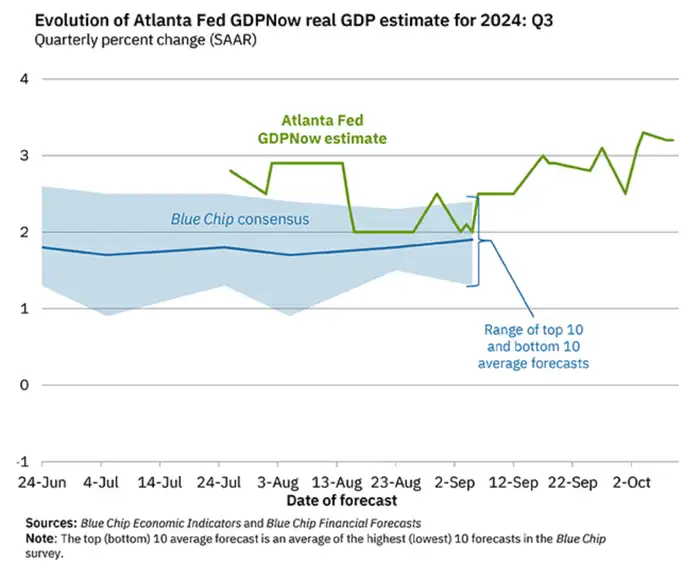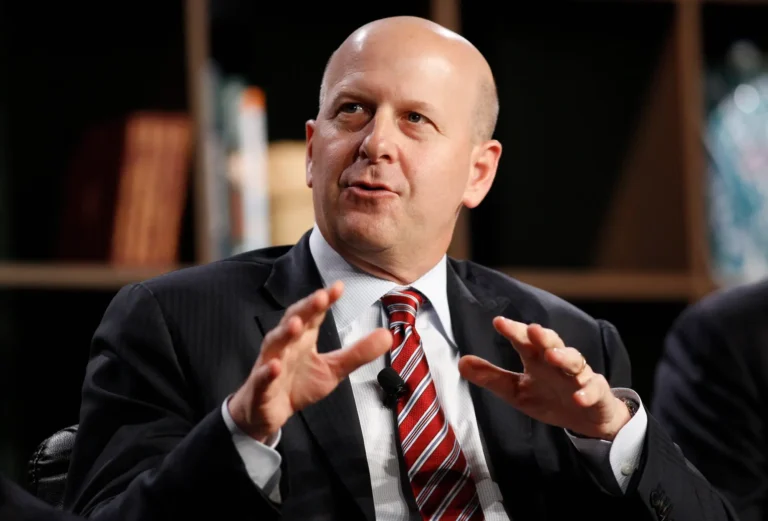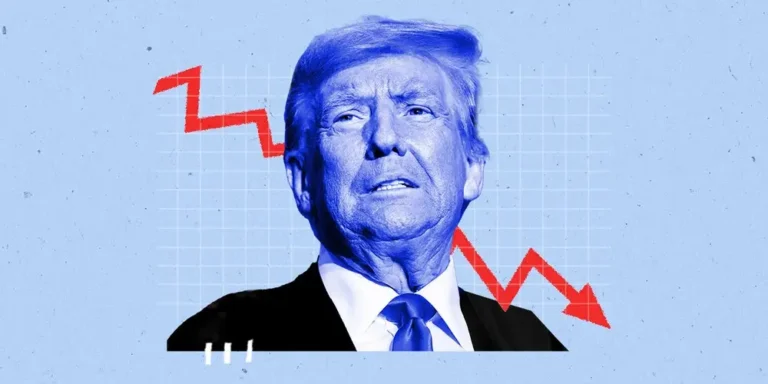Why economists and strategists still say a recession is postponed, despite a startling inflation report

Inflation still looms large over consumers, though that suggest spending is holding up.
The US economy is humming along, for better or worse — or at least it appears that way.
A shockingly strong September jobs report is one of many data points that supports this stance. Employers brought on 254,000 workers last month, versus an estimate of 147,000. The unemployment rate ticked down for a second straight month, clocking in at 4.1%.

Job additions surged by a head-turning amount in September.
Surprisingly resilient inflation also contradicts the narrative that the economy is weakening. Price growth is slowly falling from its peak, but it exceeded expectations in September after a hot reading in August. If consumer spending really was weak, inflation would likely be lower.
And then there are earnings, which are tracking to rise at the fastest pace since 2018, other than the pandemic boom of 2021. Estimates for 2025 are 5 percentage points higher at 15%.

Those signals imply solid, if not robust, economic growth. Data compiled by the Federal Reserve Bank of Atlanta supports this view, judging by its new call for above-average GDP growth in the third quarter.

“They’re looking for a third-quarter GDP report of 3.2%,” said Steve Sosnick, the chief strategist at Interactive Brokers, in a recent interview with B-17. “Does that sound like an economy that needs life support?”
Mixed signals abound at a crucial crossroads
But while the glass-half-full case for the economy is compelling, it’s easy to poke holes in it.
After all, jobless claims just rose to the highest level in more than 12 months, complicating an otherwise convincing upbeat narrative about the labor market. Manufacturing readings are also flirting with multi-year lows, and consumer confidence is lackluster while sentiment is middling.

The US Manufacturing Purchasing Managers’ Index (PMI) has dipped lately.
Further muddying the waters is the Producer Price Index (PPI), which came in flat on Friday. That seems to contradict the previous day’s Consumer Price Index (CPI) report.

The bond market is certainly confused. Resilient inflation in a healthy economy would warrant higher rates, but elevated jobless claims should lead to the opposite. And the Federal Reserve’s extra-large rate cut last month should take Treasury yields down, though they’ve surged instead.
“This is a sure sign of market confusion or lack of conviction,” John Kerschner, the head of US Securitised Products at Janus Henderson Investors, said of the direction of bond yields in written commentary on Thursday.
Equity investors are facing higher-than-usual stakes since the S&P 500 and other market indexes are near record highsaa. Plus, the pivotal US elections are right around the corner.
Inflation is a threat that won’t sink the economy
While there’s plenty of economic data to get excited about, persistent price growth is a problem.
“It’s almost impossible to come up with a scenario where a higher-than-expected inflation number is good news,” Sosnick said.
Although a 0.2 percentage point jump for the CPI may not seem like much, Sosnick said data from recent months can be annualized to over 3%, which is well above the Fed’s inflation target.
“If we’re going to be data dependent, we have to at least look at the data,” Sosnick said.
Other market observers are also worried that consumer prices are headed the wrong way.
“Admittedly, more data like this month’s would leave lingering concerns around inflation,” said Preston Caldwell, Morningstar’s chief US economist, in written commentary after the CPI report.
And while Jim Baird, the chief investment officer at Plante Moran Financial Advisors, thinks consumers shouldn’t lose sleep over slightly higher prices, investors must eye the data closely.
“The longer-term disinflationary trend appears intact, although the divergence between headline inflation and the core reading over the 12 months ended in September will raise some questions,” Baird said in written commentary sent to B-17.
If inflation doesn’t go away quietly for whatever reason, the Fed won’t be able to cut rates as much as it’s planning to in 2025. That could emerge as a major headwind for US equities.
“Is inflation really down for the count?” said Joe Quinlan — head of markets strategy at Merrill and Private Bank, Bank of America — in an interview with B-17. “That could be reversed by geopolitics related to oil prices in the Middle East, the China reflation story, and the US economy just being stronger than expected.”
However, that latter point is why investors shouldn’t panic about an imminent recession.
Higher-than-hoped inflation is rarely compatible with an economic downturn, so if price growth does persist, it likely won’t be in an earnings-crushing contraction. Stocks may take a hit if rates don’t fall as quickly as the market wants, but there should be a firm floor under them.
Skyler Weinand, the chief investment officer at Regan Capital, expects the Fed to be careful with rate cuts since the latest economic data is a Rorschach test.
“It’s clear the Fed is divided about the path forward, and the Fed may stand down on any rate movement in November and wait for more data to materialize,” Weinand said in commentary.
But rates will eventually fall back to normal, which Weinand thinks will help the US economy secure a long-rumored soft landing. That means recession calls may not come true for years.
“Given a steeper curve and strong employment, the US stock market is positioned to keep barreling on,” Weinand said. “We’ve had some tremendous double-digit broader market return years since Covid, which may be tempered. But it’s hard to see a recession or market pain coming anytime soon.”






